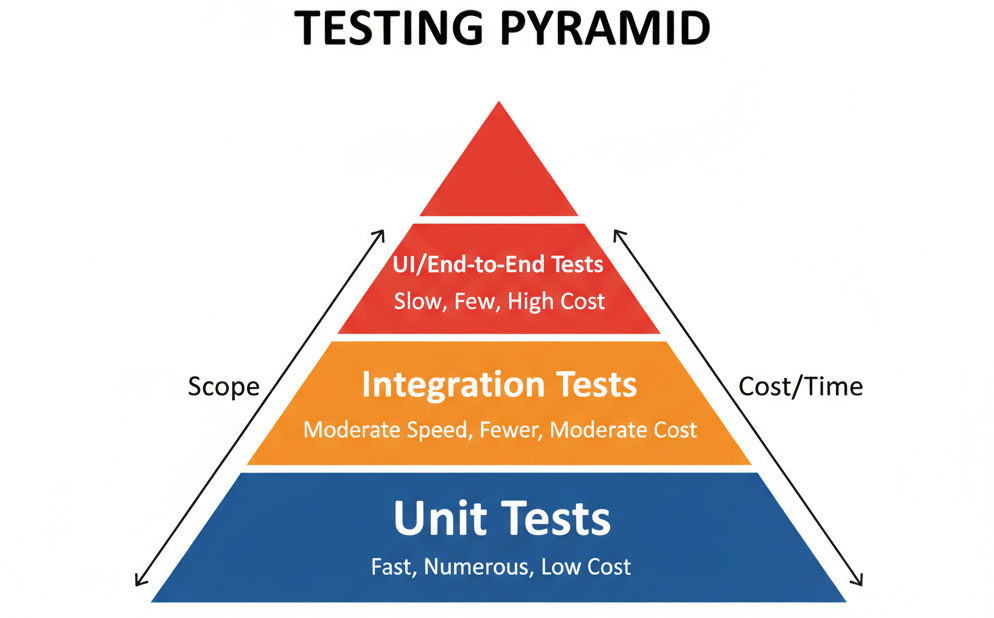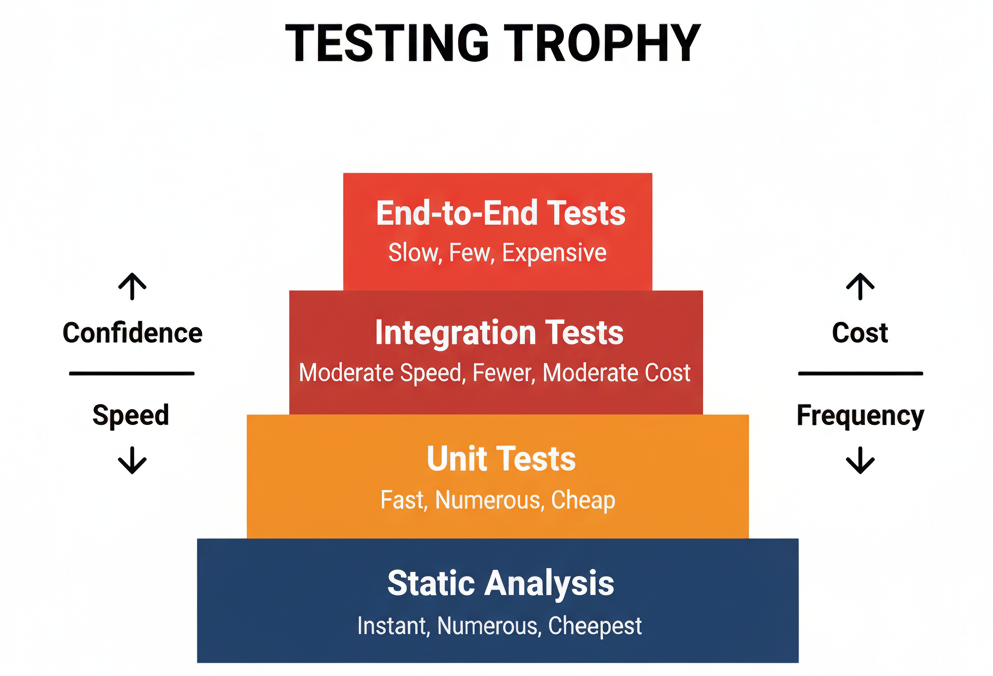How to Test JavaScript Applications: From Unit Testing to AI-Enhanced Testing

# As a Software Engineer, Always Embrace the Challenges
Two months ago, my project manager assigned me a task: **write test cases for an API**.
I was genuinely excited because it meant learning something new beyond just building features.
If you’re thinking *“writing test cases isn’t my job as a frontend or backend developer”*, you may be missing the bigger picture.
That mindset can limit your growth.
At the very least, every engineer should understand **Unit Testing** and **Integration Testing**. Writing test cases is not rocket science — it’s almost like writing plain English that feels similar to JavaScript code.
However, if you’ve tried setting up testing in a JavaScript application, you probably know **how complicated and frustrating it can be**. The JS ecosystem is vast, changes quickly, and best practices shift overnight.
That’s why I decided to write this article — to explore a **modern approach to JavaScript testing**, practical workflows, and how AI-assisted tools are transforming the process.
---
## **Table of Contents**
- [The Evolution of Testing](#the-evolution-of-testing)
- [The Core Layers of Testing](#the-core-layers-of-testing)
- [Unit Testing](#unit-testing)
- [Integration Testing](#integration-testing)
- [End-to-End Testing](#end-to-end-testing)
- [AI-Augmented Testing](#ai-augmented-testing)
- [Future of JavaScript Testing](#future-of-javascript-testing)
- [Conclusion](#conclusion)
---
## The Evolution of Testing
JavaScript testing has progressed from manual browser refreshes to automated workflows with modern CI/CD integrations.
Frameworks like **Jest**, **Mocha**, and **Cypress** laid the foundation, while newer AI-integrated tools now speed up test generation and reduce human error.
According to [IBM](https://en.wikipedia.org/wiki/Manchester_Baby), testing started with the earliest software programs. The first recorded test ran in 1948 at the University of Manchester. As software complexity and release cycles increased, reliable, systematic testing became critical.
Initially, the **Testing Pyramid** dominated — heavy on unit tests, lighter on E2E. But this model proved limiting for dynamic apps, leading to the **Testing Trophy**, which emphasizes **integration testing** for balance.


Today, **AI in QA** marks the start of a new phase: tools that execute, generate, and self-heal tests automatically.
---
## The Core Layers of Testing
Testing is not just about bug detection — it’s about **reliability**, **scalability**, and **user satisfaction**.
A balanced strategy should include:
1. **Unit Testing**
2. **Integration Testing**
3. **End-to-End Testing**
4. **AI-Augmented Testing**
---
### Unit Testing
#### Purpose
Tests individual components or modules **in isolation**, ensuring they behave as expected.
#### Tools
- [**Vitest**](https://vitest.dev/) — Fast, modern, works well with **Vite**
- [**Jest**](https://jestjs.io/) — Popular in React and general JS projects
**Example — Utility Function:**// sum.ts
export const sum = (a: number, b: number) => a + b;
**Vitest Unit Test:**// sum.test.ts
import { describe, expect, it } from "vitest";
import { sum } from "./sum";
describe("sum function", () => {
it("should return the sum of two numbers", () => {
expect(sum(2, 3)).toBe(5);
});
});
**Structure of a Test:**
1. **Description** – Purpose of the test
2. **Execution** – Run the function/component
3. **Assertion** – Verify output matches expectation
---
### Integration Testing
#### Purpose
Ensures different modules/services work together as expected.
Catches issues in **data flow**, **component interactions**, and **API integration**.
**Example Scenario** — React component fetches user data:
import { render, screen, waitFor } from "@testing-library/react";
import User from "../components/User";
import { describe, test, expect } from "vitest";
describe("User Component", () => {
test("fetches and displays users successfully", async () => {
render();
expect(screen.getByText("Loading...")).toBeInTheDocument();
await waitFor(() => {
expect(screen.getByText(/: .*@/)).toBeInTheDocument();
});
});
});
**Best Practices:**
- Mock API calls
- Simulate loading/error states
- Use `@testing-library/react` for DOM interaction
---
### End-to-End Testing
#### Purpose
Simulates **real user interactions across the app** — testing the entire workflow from frontend to backend.
**Example — Login Flow with Playwright:**import { test, expect } from "@playwright/test";
test("should login successfully", async ({ page }) => {
await page.goto("http://localhost:3000/login");
await page.fill('input[name="email"]', "user@example.com");
await page.fill('input[name="password"]', "password123");
await page.click('button[type="submit"]');
await expect(page).toHaveURL("http://localhost:3000/dashboard");
await expect(page.getByText("Welcome back!")).toBeVisible();
});
**Breakdown:**
1. Navigate to login
2. Input credentials
3. Submit form
4. Verify dashboard loads & welcome text appears
---
### AI-Augmented Testing
#### Purpose
Leverages AI to:
- **Generate** test cases
- **Predict** edge cases
- **Self-heal** when UI changes occur
Tools like **GitHub Copilot**, **CodiumAI**, and **Bug0** help reduce manual QA effort by generating responsive test suites.
**Key Advantages:**
- Automates repetitive tasks
- Adapts tests during UI updates
- Integrates into CI/CD pipelines for auto-validation
---
## Future of JavaScript Testing
Key Trends:
- **Proactive bug prevention** using AI
- Deep integration with CI/CD
- Real-time test monitoring & auto-adjustment
- Intelligent frameworks combining linting + static analysis + test generation
Testing will become **frictionless and adaptive**, allowing developers to focus on building rather than debugging.
---
## Conclusion
Testing isn’t just about finding bugs — it’s about **building confidence** in your code.
The next era will be defined by **developer-AI collaboration**, with continuous, intelligent safeguards ensuring reliability.
Whether you’re writing:
- **Unit tests** for core logic
- **Integration tests** for module interaction
- **E2E** for user workflows
- **AI-powered automation** for adaptive coverage
...testing is the silent engine that keeps great software running smoothly.
Next time you hear *“writing tests isn’t your job”*, remember:
**Testing is not extra work — it’s essential to creating dependable software.**
---
**Bonus Resource:**
Platforms like [AiToEarn官网](https://aitoearn.ai/) empower creators to use AI for **multi-platform publishing** and **analytics**, leveraging efficiency similar to modern automated testing.
---


